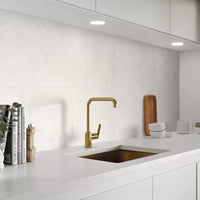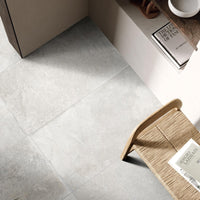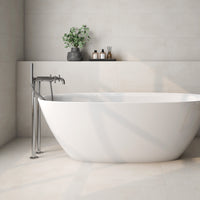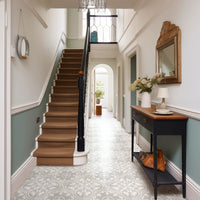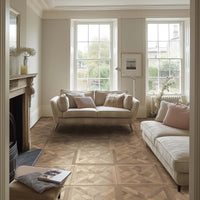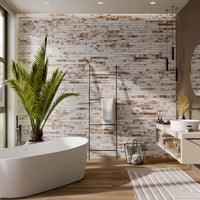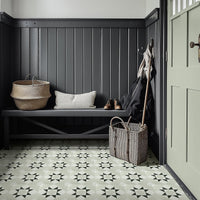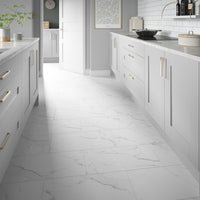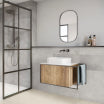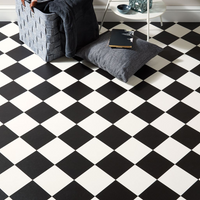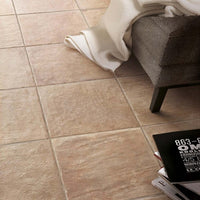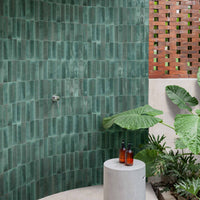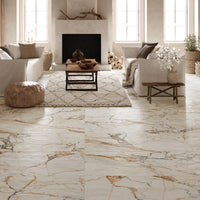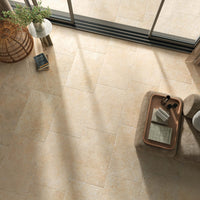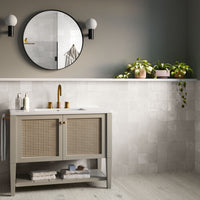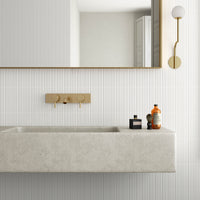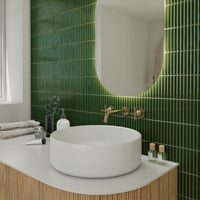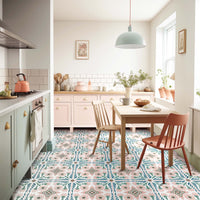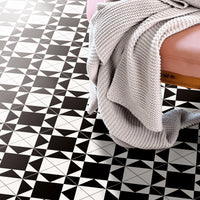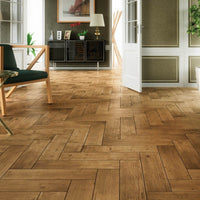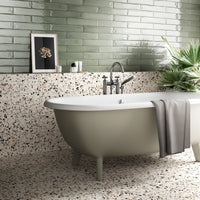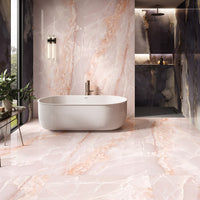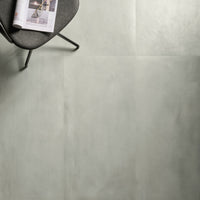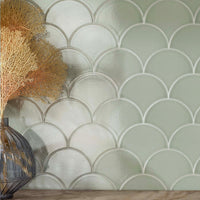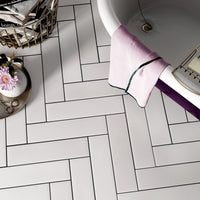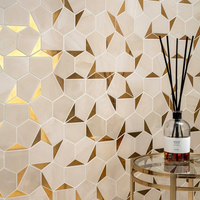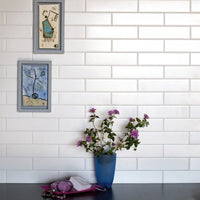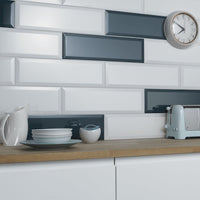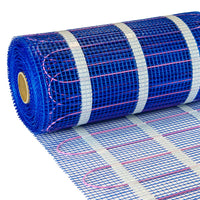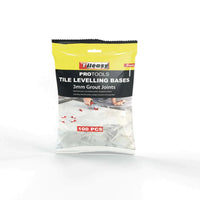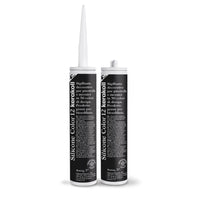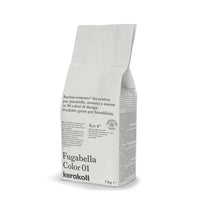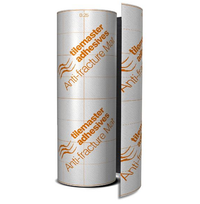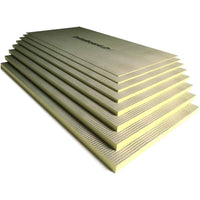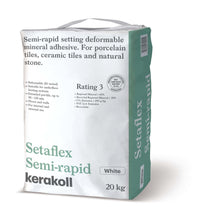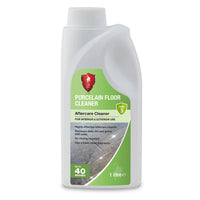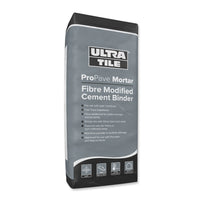When it comes to pared-back perfection, it’s difficult to look beyond a polished concrete floor. There’s a good reason why they’re a firm favourite with Grand Designers and savvy style mavens - the seamless finish is the perfect match for open plan living spaces and the grey tones are bang on trend.

However here in the real world, a polished concrete floor is often just a pipedream. It can be horrendously expensive to install and a little tricky to maintain. Thankfully, we’ve got a range of
polished concrete effect tiles that offer the raw charms without any of the drawbacks. We’ve made a side-by-side comparison of both flooring options to help you decide between the two.
1. Cost
Let's start with one of the most important considerations for any project, cost. Porcelain tiles win on this front by a country mile, even when you factor in the price of installation. If we take the price of our most expensive concrete effect tile - currently
Cemento Light Grey 75 x 75 cm, at £41 per m² - and add on a very generous £40 per m² for installation, this gives a total price of £81 per m². On the other hand, according the Real Homes magazine the average cost of a polished concrete floor starts at around £150 per m², but can easily be more! Some of our polished concrete effect tiles, such as Concept Grey 60 x 60 cm, cost as little as £21.84 per m². So over a large kitchen or extension floor, you could easily save a few thousand pounds by opting for tiles.
Result? Round 1 is a walkover for porcelain tiles.
2. Installation
Again, it's another clear victory for porcelain tiles on every installation front. They're easy to cut, can be fixed to a variety of surfaces and if you use a fast-drying adhesive, you can be walking on your new floor in just a few hours' time. Conversely, by their very nature polished concrete floors involve a lot more mess, time and stress. While they're relatively straightforward to install in a new-build, retrofitting is a definite no-no unless you've got a degree in mindfulness. Once the concrete has been applied, it will be a month before it can be polished which, as you can imagine, creates a lot of dust.
Result? It's an easy-win for cement-effect tiles.
3. Weight
And it's not only dust and ever-increasing timescales you'll need to worry about. We're stating the obvious here but concrete slabs are thick. Really thick. Whereas a tiled floor measures around 20 mm once adhesive is accounted for, a polished concrete slab is usually at least 100 mm deep. This means that polished concrete floor you'd love for your upstairs bathroom is a definite no-no, unless you fancy strengthening your existing joists. In contrast, porcelain tiles are as light as a feather and can be safely used in bedrooms and ensuites.
Result. 3 - 0 to tiles.
4. Style
If you'll excuse the pun, poured concrete floors cast off their ugly tag a long time ago. These days, they're the covering of choice for loft apartments, go-to restaurants and cutting-edge galleries. Stick to light to mid grey tones and you'll have a neutral backdrop that's perfect for pairing with almost any other colour and style.

It's important to note that poured concrete has a natural aesthetic, so expect to see significant shading and cracks develop over time. Even though it's part and parcel of a concrete floor, it might not be desirable. If you prefer a more consistent style, look to cement-effect tiles produced using digital printing technology. These faithfully replicate the patina of polished concrete, so you'll get all the character and charm without having to worry about excessive variation or hairline cracks.
Result. A point each. Polished concrete wins on charm, porcelain tiles win on consistency.
5. Maintenance
Let’s start with the positives. Both polished concrete floors and porcelain tiles can be regarded as low maintenance options, especially when compared to carpet and hardwood flooring. However, if we delve a little deeper it’s clear that concrete effect tiles have the upper hand. By their very nature, porcelain tiles are virtually impervious which means they’re very difficult to stain. This is great news if you’re a bit clumsy with your coffee like me! Most spills can be wiped away with some warm water - more stubborn stains might need a little elbow grease. On the other hand, polished concrete floors require more care and attention. After being polished, a sealer is usually applied to protect the surface from grease and moisture. This wears away over time and needs to be re-applied, otherwise you’ll have a floor that’s easy to stain. Floors in particularly busy areas might lose their sheen over time, in which case they’ll need to undergo the polishing process again.
Result. Tiles win again as we enter the final round.
6. Underfloor Heating
If you’re considering polished concrete the chances are you’ve got a large extension or open plan living area in mind. And when it comes to these spaces, the latest looks are all about keeping things sleek and streamlined - so it’s bye bye bulky radiators and hello to hidden heating. And the great thing is that both polished concrete and tiles are perfect to use with underfloor heating - they retain heat well and are extremely pleasant underfoot. With the former, you’ll have to use a ‘wet’ system where hot water pipes are embedded into the screed. With the latter, you can use either a wet system or a ‘dry’ system which consists of
electric cables laid under the tiles. There are benefits to both systems which go beyond the scope of this article. However, in our humble view we’d take either underfloor heating option over radiators every day of the week. So in that case, this round ends in a draw.
Result. It's 6 - 2 to tiles.
Conclusion
Here at Porcelain Superstore, we're big fans of polished concrete floors. There's no denying that the grey, seamless style is a perfect match for modern interiors. But then, why go to the hassle and expense when our cement effect tiles will give you the same look for a fraction of the price? It's pretty clear that porcelain tiles have the advantage over polished concrete in almost every single way. And on a final note, did we mention that our porcelain tiles can be used on your patio, for that inside/outside look that contemporary design demands?
 However here in the real world, a polished concrete floor is often just a pipedream. It can be horrendously expensive to install and a little tricky to maintain. Thankfully, we’ve got a range of polished concrete effect tiles that offer the raw charms without any of the drawbacks. We’ve made a side-by-side comparison of both flooring options to help you decide between the two.
However here in the real world, a polished concrete floor is often just a pipedream. It can be horrendously expensive to install and a little tricky to maintain. Thankfully, we’ve got a range of polished concrete effect tiles that offer the raw charms without any of the drawbacks. We’ve made a side-by-side comparison of both flooring options to help you decide between the two.
 It's important to note that poured concrete has a natural aesthetic, so expect to see significant shading and cracks develop over time. Even though it's part and parcel of a concrete floor, it might not be desirable. If you prefer a more consistent style, look to cement-effect tiles produced using digital printing technology. These faithfully replicate the patina of polished concrete, so you'll get all the character and charm without having to worry about excessive variation or hairline cracks. Result. A point each. Polished concrete wins on charm, porcelain tiles win on consistency.
It's important to note that poured concrete has a natural aesthetic, so expect to see significant shading and cracks develop over time. Even though it's part and parcel of a concrete floor, it might not be desirable. If you prefer a more consistent style, look to cement-effect tiles produced using digital printing technology. These faithfully replicate the patina of polished concrete, so you'll get all the character and charm without having to worry about excessive variation or hairline cracks. Result. A point each. Polished concrete wins on charm, porcelain tiles win on consistency.
